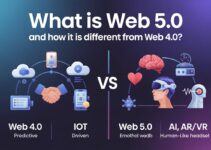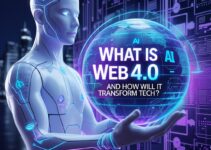Introduction
What is IoT technology? Connecting the Digital World explores how interconnected devices are transforming the way we live, work, and interact with technology. From intelligent homes to factory automation, what exactly is IoT technology? Connecting the Digital World reveals the benefits, applications, and innovations shaping our connected future. Are you a beginner or a tech lover? What exactly is IoT technology? Connecting the Digital World will help you understand this game-changing technology and its impact on modern life.
The Internet of Things (IoT) technology is no longer just a futuristic buzzword—it’s an active part of our homes, workplaces, and cities. This guide will walk you through everything you need to know about IoT, from the basics to its industry-changing applications and future trends.
Understanding IoT Fundamentals
What IoT Really Means for Everyday Life
IoT refers to the network of physical devices—from smart thermostats to industrial machines—connected to the internet, collecting and exchanging data to make processes smarter and more efficient.
The Evolution of Connected Devices
IoT started with simple RFID tags and sensors, evolved into home automation, and now powers everything from self-driving cars to remote patient monitoring.
How IoT Creates Value in Modern Society
IoT boosts productivity, reduces waste, improves decision-making, and enables personalized user experiences.
Key Components of IoT Ecosystems
• Devices & Sensors: Collect data from the physical world.
• Connectivity: Wi-Fi, 5G, LPWAN, and more.
• Data Processing: Cloud and edge computing for analytics.
• User Interfaces: Apps and dashboards to control devices.
Essential IoT Technologies and Protocols
Wireless Communication Standards Explained
Wi-Fi, Bluetooth, Zigbee, Z-Wave, and LoRaWAN each serve different connectivity needs in IoT networks.
Cloud Computing’s Role in IoT
Stores and processes large amounts of IoT data, enabling global access and real-time insights.
Edge Computing vs. Cloud Processing
Edge devices process data locally for faster response, while cloud systems handle complex, large-scale analysis.
Data Transmission Protocols
MQTT, CoAP, and HTTP ensure reliable communication between devices and applications.
Security Standards for Protected Communications
Encryption, authentication, and secure firmware updates are essential to protect IoT devices from cyber threats.
Setting Up Your Smart Home
Choosing the Right Smart Hub
Pick a hub compatible with your preferred ecosystem—Amazon Alexa, Google Home, or Apple HomeKit.
Essential IoT Devices for Beginners
Start with smart bulbs, plugs, thermostats, and security cameras for quick wins in convenience.
Voice Assistants as Control Centers
Voice commands make managing multiple devices faster and more intuitive.
IoT Applications across Industries
• Healthcare: Wearable, remote monitoring, and connected diagnostic tools improve patient outcomes.
• Intelligent Cities: The Internet of Things enhances traffic management, waste disposal, and energy consumption.
• Industrial IoT: Predictive maintenance and automation boost manufacturing efficiency.
• Agriculture: Smart irrigation and crop monitoring conserve resources and improve yields.
• Retail: Personalized offers, smart shelves, and inventory tracking enhance the shopping experience.
Overcoming Common IoT Challenges
• Security Vulnerabilities: Regular updates, strong encryption, and secure passwords help safeguard devices.
• Battery Life Management: Low-power chips and energy harvesting extend operational time.
• Device Interoperability: Open standards and APIs allow devices from different brands to work together.
• Massive Data Processing: AI and big data tools help manage and interpret the information generated.
Future Trends Shaping IoT Development
• AI & Machine Learning: Enable devices to predict, adapt, and automate tasks intelligently.
• 5G Networks: Provide faster, more reliable connections for high-density IoT deployments.
• Blockchain Security: Adds trust and transparency to IoT transactions.
• Wearable Tech Expansion: Health, fitness, and productivity wearables will play an even bigger role in everyday life.
Final Thoughts
The Internet of Things (IoT) is integrating into all parts of contemporary life, enhancing our surroundings to be more responsive, efficient, and tailored to our needs. With continued advancements in AI, connectivity, and security, the connected world is just getting started.
Frequently Asked Questions (FAQs)
Q1: What are IaaS, PaaS, and SaaS in simple terms?
• IaaS gives cloud infrastructure, PaaS provides a development platform, and SaaS offers software that is ready to use.
Q2: Which is better—IaaS, PaaS, or SaaS?
• It depends on your needs: IaaS gives control, PaaS helps developers, and SaaS is best for quick use.
Q3: What are some examples of IaaS, PaaS, and SaaS?
• IaaS: Amazon Web Services EC2, PaaS: Google App Engine, SaaS: Google Workspace.

